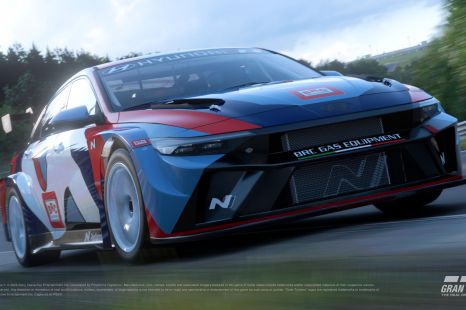

Damion Smy
Hyundai i30 N TCR celebrates 10 years of ‘N’ with Gran Turismo 7 debut
1 Day Ago
If you're one of the few people that still buys mid-sized sedans not called 'Toyota Camry', you could do a lot worse than the Mazda 6 Sport.
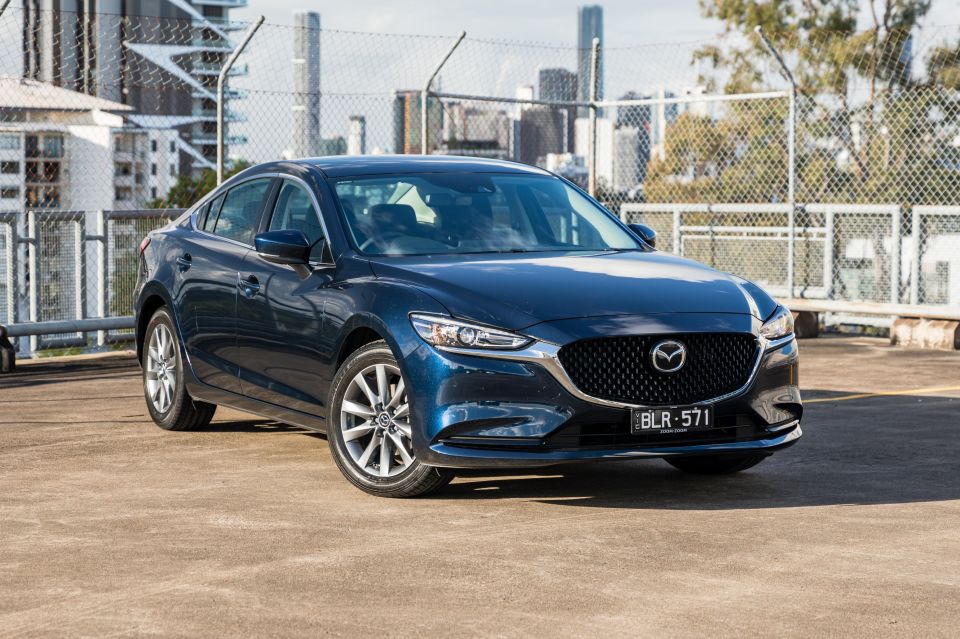
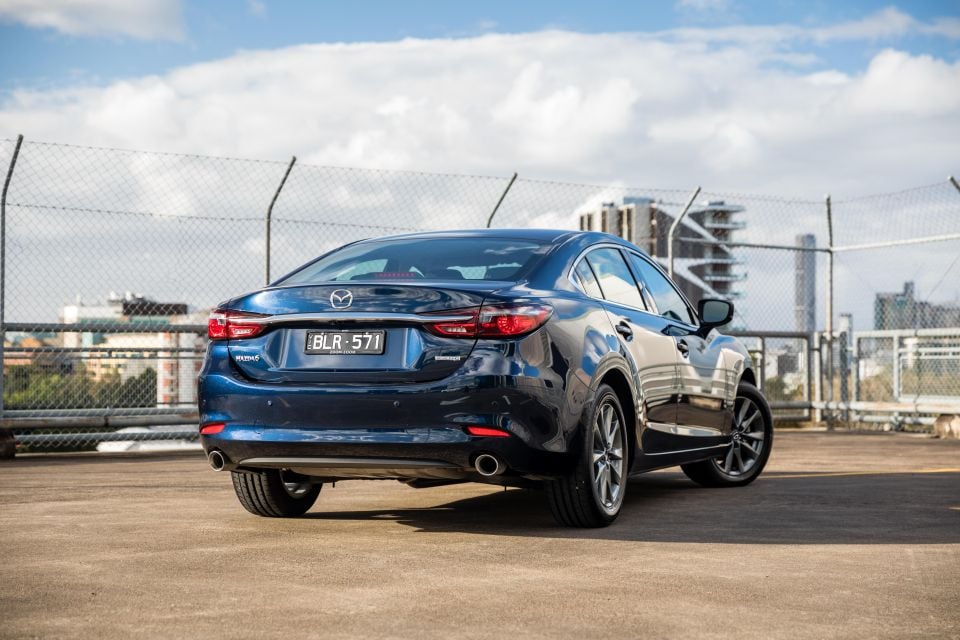

News Editor
New from
$34,490
excl. on-roads

News Editor
New from
$34,490
excl. on-roads


News Editor
New from
$34,490
excl. on-roads

News Editor
New from
$34,490
excl. on-roads
Quickly see how this car stacks up against its competition. Select any benchmark to see more details.
Where expert car reviews meet expert car buying – CarExpert gives you trusted advice, personalised service and real savings on your next new car.
The past couple of years have seen a mass exodus from the mid-sized passenger car segment in Australia.
The Ford Mondeo, Kia Optima and Subaru Liberty were all axed in 2020, while the new Hyundai Sonata has been launched only in a single, highly-specified model and sales of the Honda Accord and Peugeot 508 barely register.
That leaves only the Mazda 6, Toyota Camry and a couple of Volkswagen Group entries, the Skoda Octavia and Volkswagen Passat, as volume players.

Not that they’re all particularly high-volume in the grand scheme of things – the 6 is outsold by the CX-5 by more than 12-to-1.
Even the Camry lives in the shadow of its more popular RAV4 stablemate.
With mid-sized SUVs now a default choice for thousands of Australians, is there an advantage in going with a less fashionable sedan or wagon? And is the current 6, first introduced in late 2012, still worthy of consideration?
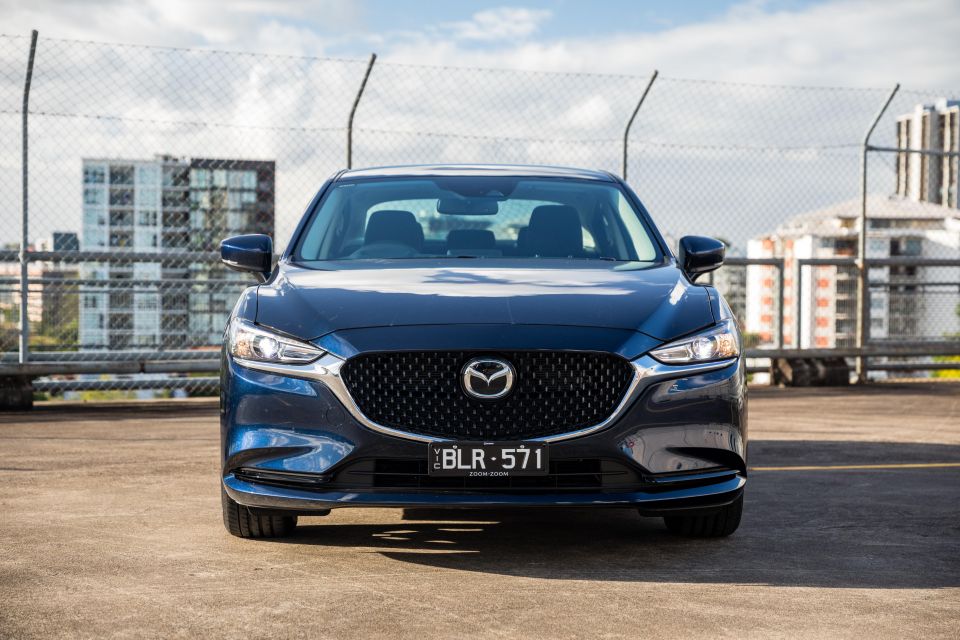
The Sport sedan on test is the cheapest way to get into a new Mazda 6, priced at $34,590 before on-road costs. The wagon variant adds $1300 to that price tag.
According to Mazda’s configurator, the Sport sedan costs $38,298 drive-away for a private buyer in Brisbane. A range of Mica paint finishes are standard, though the three metallic finishes cost an extra $495.
That’s pricier than the base Toyota Camry Ascent, which in non-hybrid guise retails for $30,990 before on-roads. Step up to the more comparably-specified Ascent Sport Hybrid, however, and you’re looking at $36,290 before on-roads.
The Skoda Octavia, which typically sits in third behind the Camry and 6 in the sales race, starts at $30,390 before on-road costs in 110TSI Ambition guise. Current drive-away pricing is $32,990, though to match the Sport’s roster of safety kit you’re looking at $42,790 drive-away.
The cheapest Honda Accord, Hyundai Sonata, Peugeot 508 and Volkswagen Passat models sit well above the $40,000 mark, even before on-road costs.
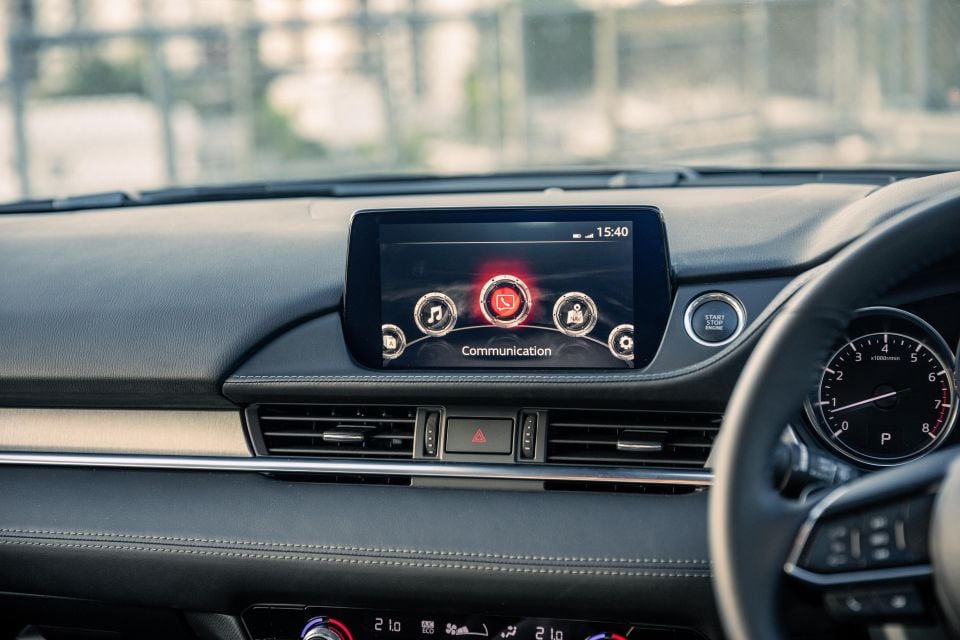
Buy your new car without the stress. It's fast, simple and completely free.

Great service from Travis and team, second time I have used this business would not hesitate to recommend them to anyone
Craig C.
Purchased a Ford Ranger in Sunshine Coast, QLD
CarExpert helped Craig save thousands on his Ford Ranger, now let us save you on your next new car.
Find a dealSport may just be the most overused word in the automotive industry, but in this case it denotes a base model.
Standard equipment on the Mazda 6 Sport includes:
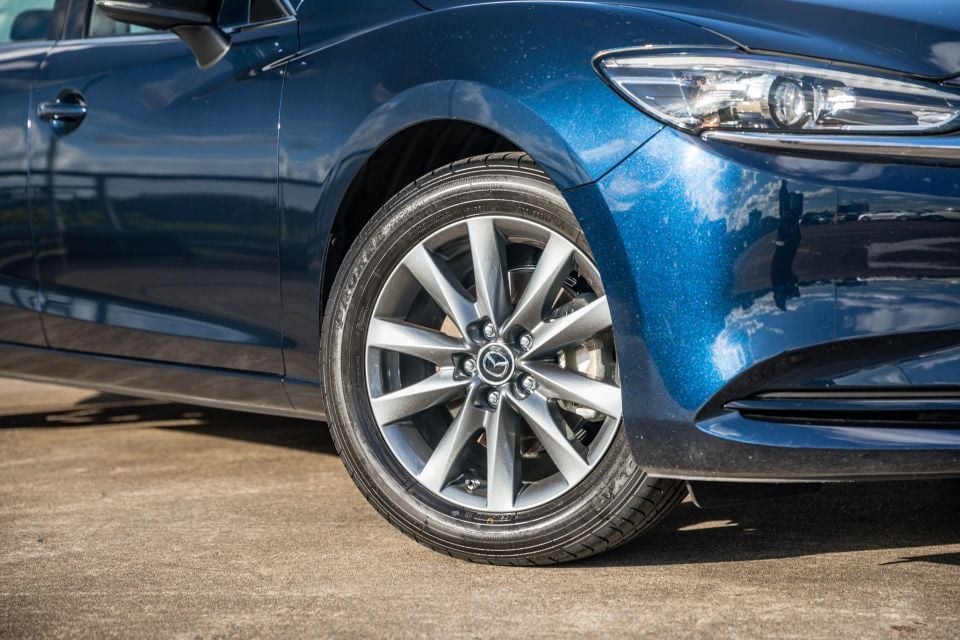
The LED headlights provide crisp, expansive illumination, but the presence of halogen daytime running lights is a head-scratcher. They mar the Sport’s otherwise upscale look.
While there’s no keyless entry or front parking sensors, for which you’ll need to step up to the $4300 more expensive Touring, the Sport gets the fundamentals right with its standard head-up display and LED headlights and a long list of standard safety equipment.
The Octavia 110TSI Ambition initially looks like a serious threat to the Mazda in terms of value, particularly with its larger 10.0-inch touchscreen and digital instrument cluster.
But in order to get the Mazda’s blind-spot monitoring and rear cross-traffic alert, you not only have to step up to the 110TSI Style, but you’ll also need to add a costly $5800 Luxury Pack.
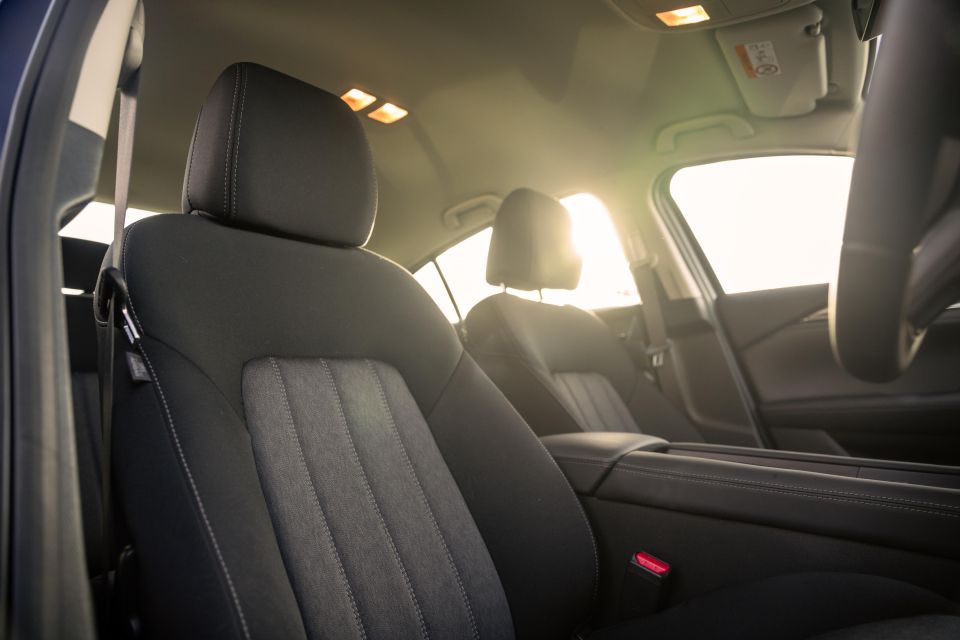
Still, for just over $3000 more than the Mazda using drive-away pricing, you get equipment like leather upholstery, power front seats and heated front and rear seats. Even the Mazda 6 Touring lacks the latter.
The Camry Ascent Sport offers blind-spot monitoring and rear cross-traffic alert as standard, while also boasting keyless entry and a surround-view camera. There’s no head-up display, however.
If you were considering making the leap to an SUV, the CX-5 variant that’s closest in performance and equipment to the 6 Sport is arguably the Maxx Sport.
It uses the same engine as the 6 Sport and, while it misses out on a head-up display, it features all-wheel drive. But at $39,490 before on-road costs, it’s almost $5000 more than the Sport sedan and $3600 more than the Sport wagon.
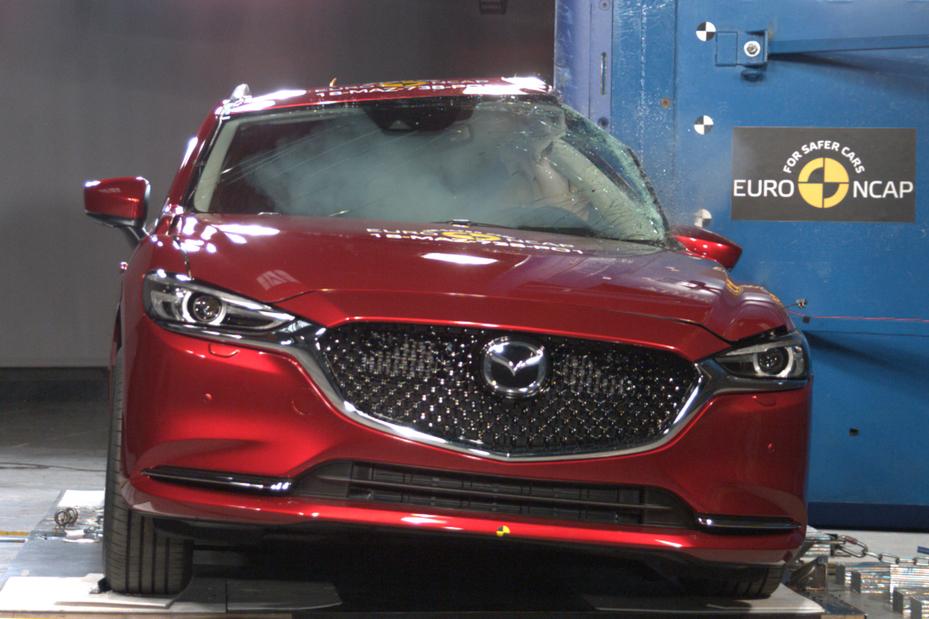
The Mazda 6 Sport comes standard with the following safety equipment:
The Mazda 6 wears a five-star ANCAP safety rating based on 2018 testing, achieving 95 per cent for adult occupant protection, 91 per cent for child occupant protection, 66 per cent for vulnerable road users and 73 per cent for safety assist.
Its autonomous emergency braking system (Smart City Brake Support in Mazda speak) detects vehicles at speeds of between four and 80km/h and pedestrians between 10 and 80km/h.
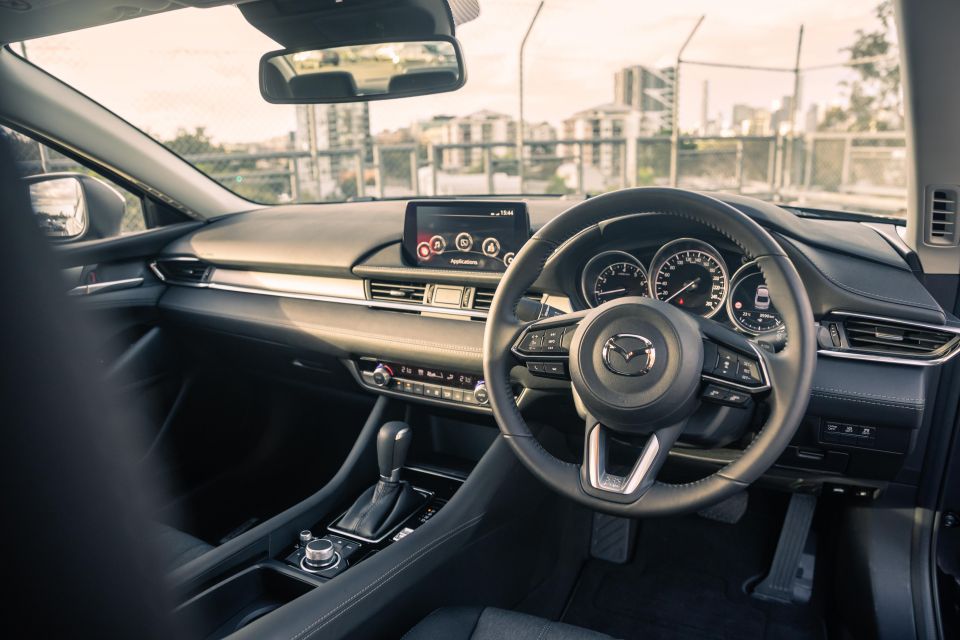
Much like the exterior, the Mazda 6’s cabin is ageing well.
Not only are there soft-touch materials with attractive stitching details on the dashboard, there’s also soft leatherette trim on the sides of the centre console.
The soft-touch materials continue on the tops of the doors, both front and rear, while the black-on-black colourway is broken up with some attractive, metal-look trim on the dash and doors.
Where the Mazda 6 shows its age is with its infotainment system. It’s running on the older MZD Connect system so, while its 8.0-inch screen is still competitive, the graphics are looking dated and response times can be a bit slow.

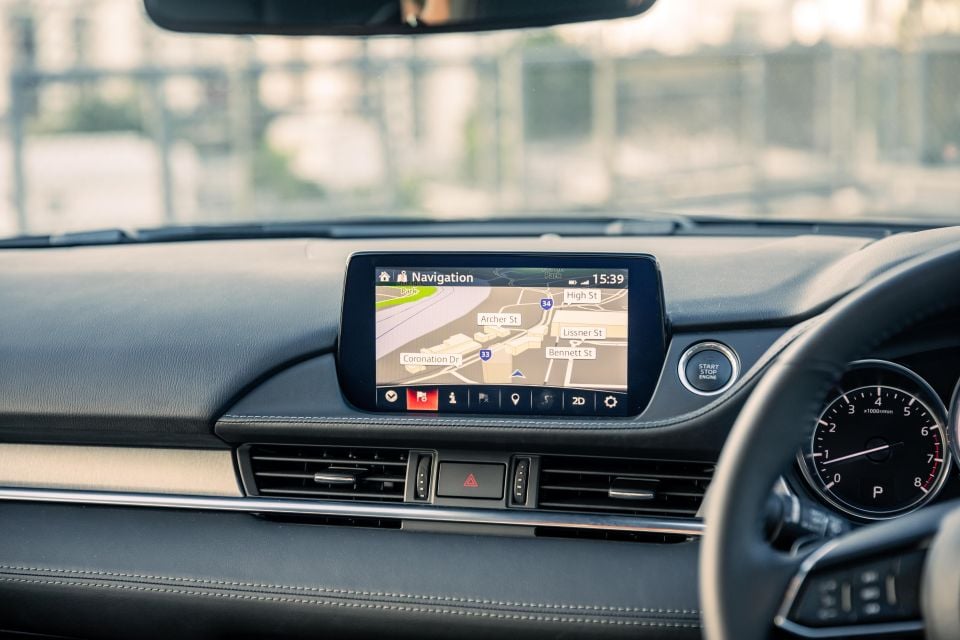
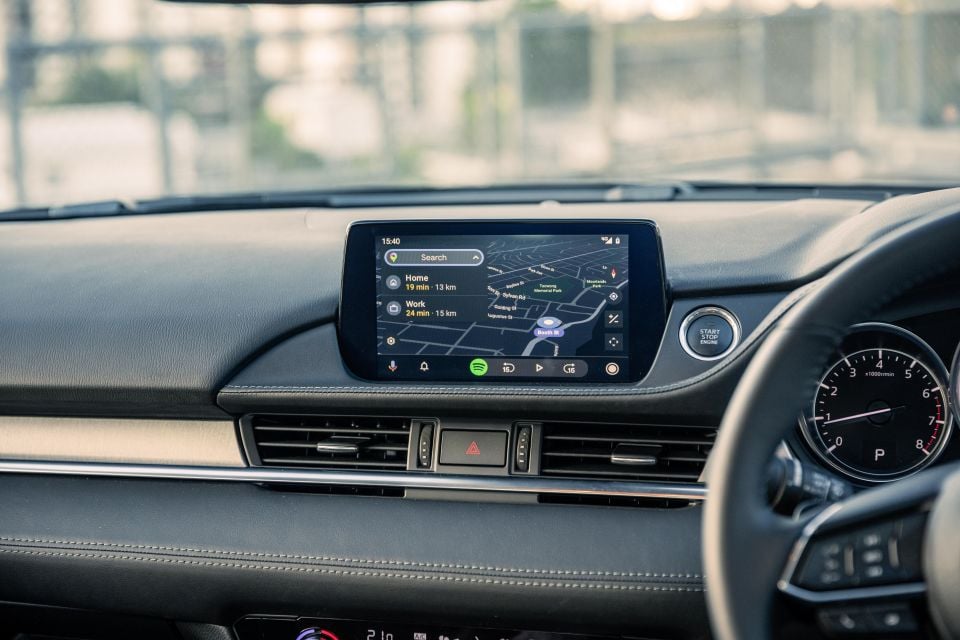
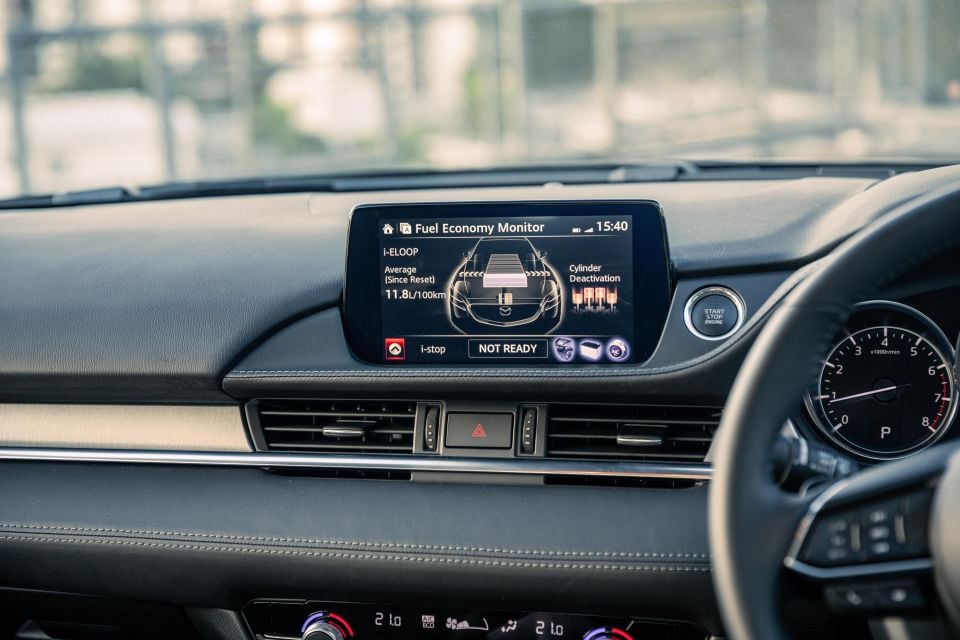
That includes when you start the car without reconnecting the smartphone you were mirroring last time you went for a drive, resulting in a lengthy loading screen.
The navigation graphics, at least, are clean and uncluttered, while the rotary dial feels well-weighted and allows you to easily navigate the system. You can also use hard shortcut buttons next to the dial to jump to particular functions, while there’s a favourite button you can program as a shortcut to a preferred function.
Frustratingly, I experienced the same issue I’ve had before in other Mazda products. You can toggle between Day, Night and Auto modes for the infotainment screen’s brightness, and yet the Auto mode refuses to dim the screen at nighttime for me.
It isn’t just a phone-related issue, as it affects not only Android Auto but also the regular interface. I could be driving in the pitch-black night with the headlights on high-beam and the screen would be glowing like a homing beacon.
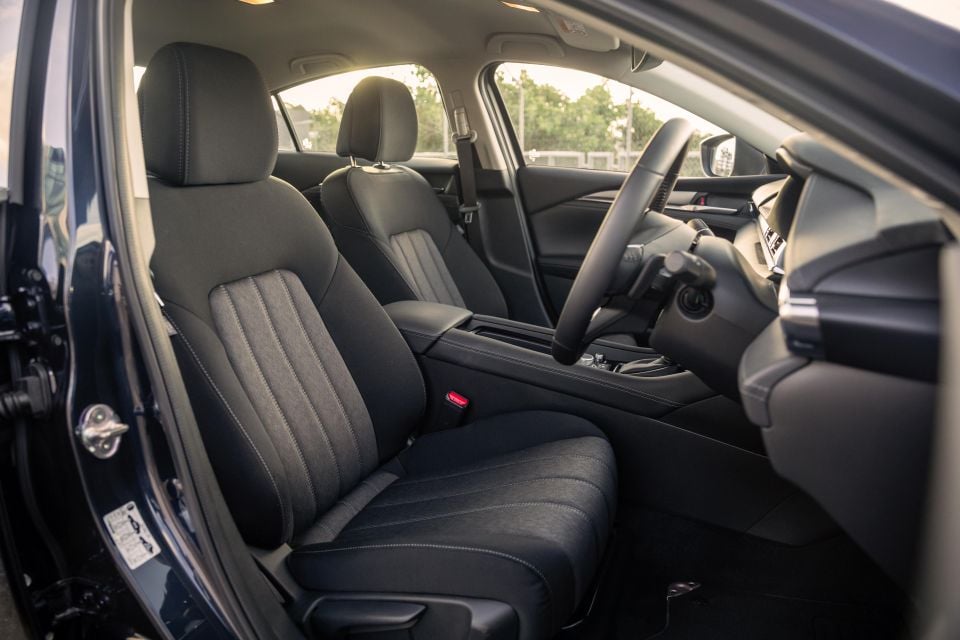
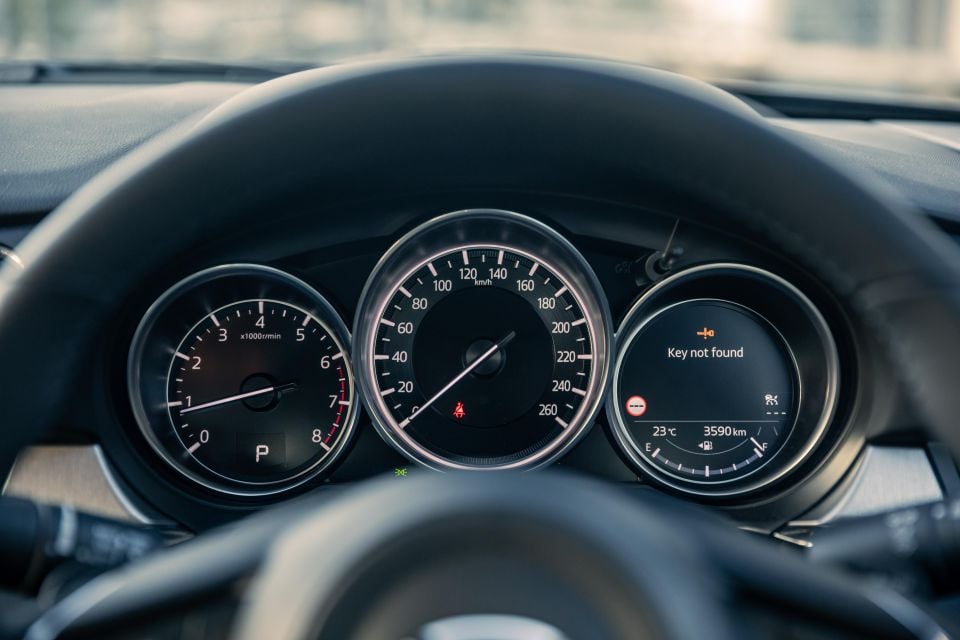
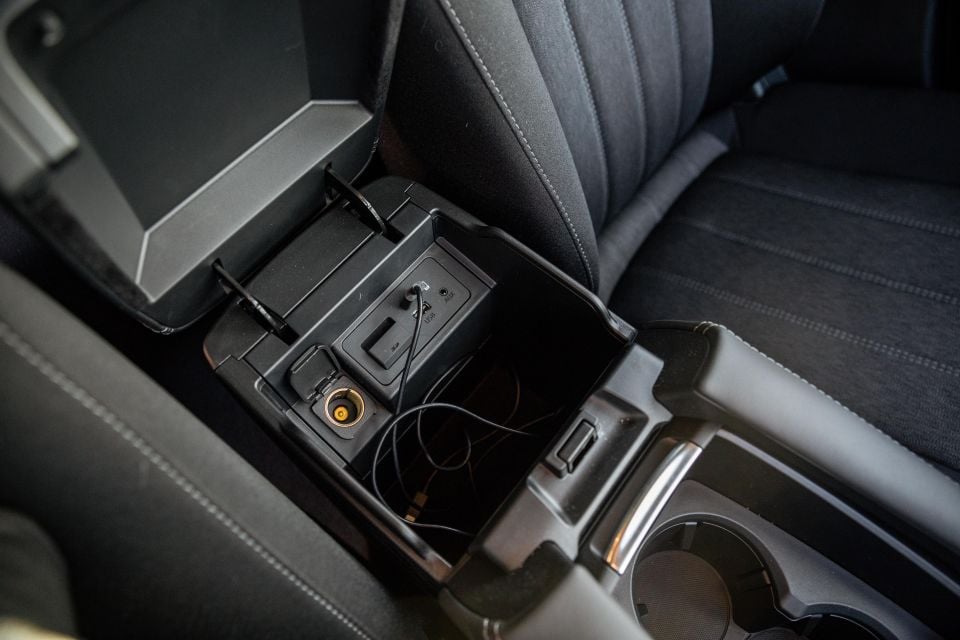
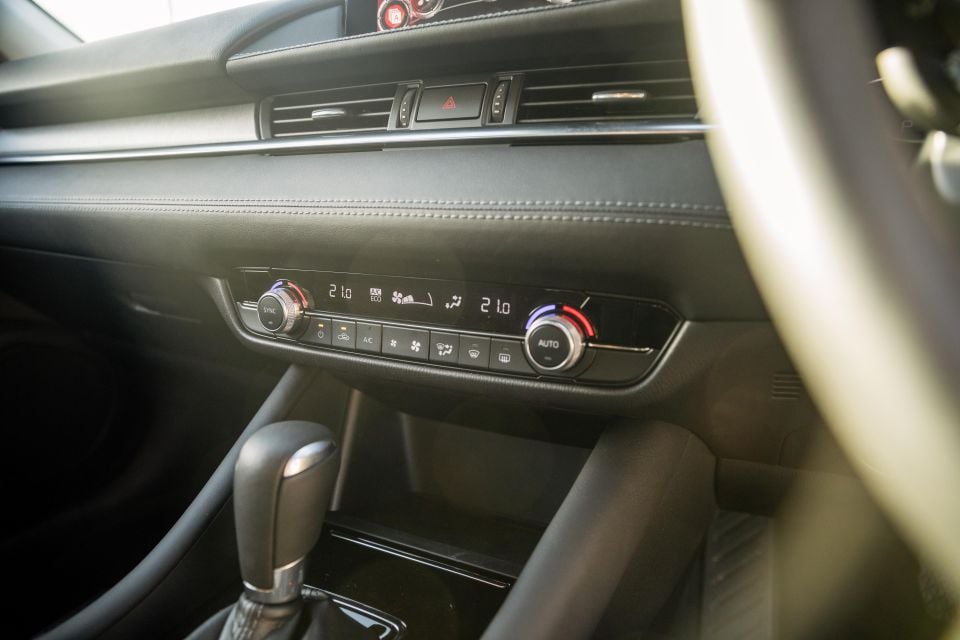
Mazda’s parts-bin climate control switchgear is inoffensive, while the dashboard’s minimalist look is accomplished without resorting to naff touch-capacitive controls. The inclusion of a head-up display in a base model car is also refreshing – take note, rivals.
The cloth trim has a distinctive look and feel. The seats aren’t the cushiest but they prove supportive and comfortable over long distances.
The instrument cluster, like the infotainment system, is looking perhaps a tad dated. It’s functional, though, with two legible analogue dials and a screen in the slot where a third analogue dial would sit.
In terms of storage, there’s a relatively slim yet deep centre console bin under the armrest where you’ll also find a 12V outlet and the two USB outlets.
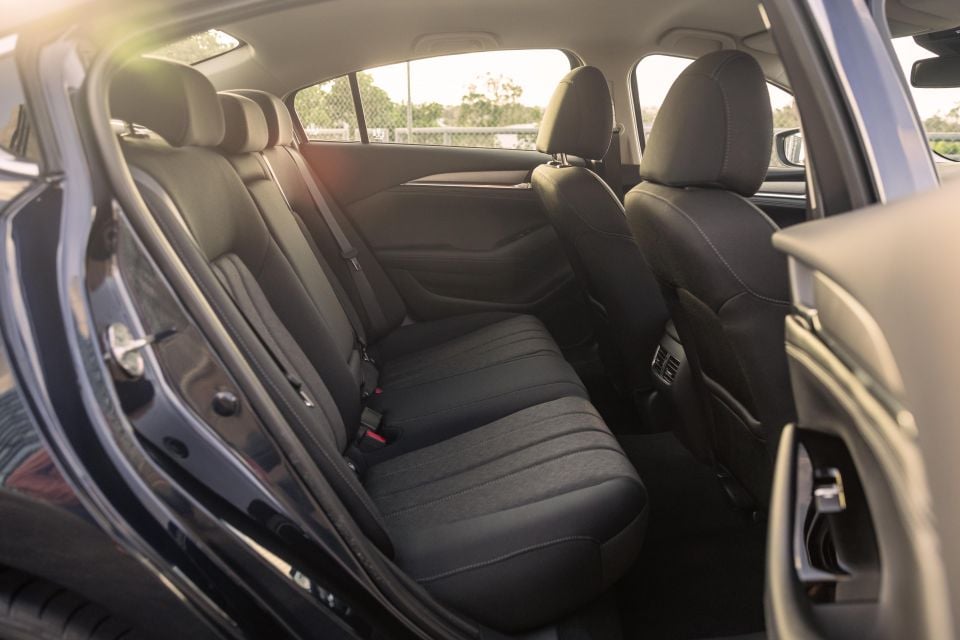
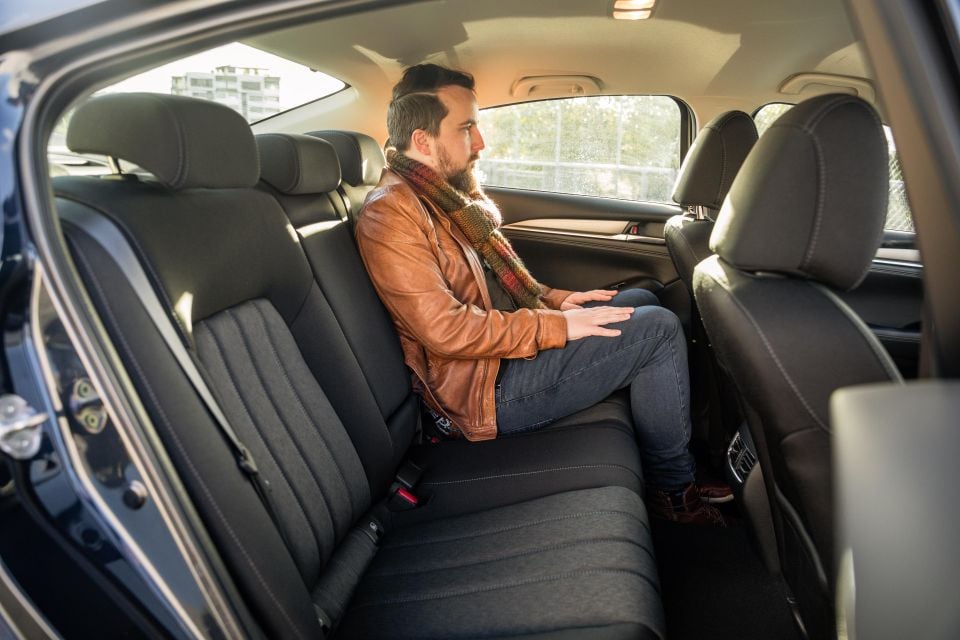
Each door has a bottle holder that can fit a 1L-1.25L bottle, while there are also rubber lift-out pads inside these holders to help reduce the sound of things rolling around.
There’s a little shelf at the base of the centre stack, which would be an ideal spot for a wireless charging pad. You might find room a bit tight there, though, for newer, larger smartphones.
Step into the back – watch your head with that sleek roofline – and you’ll find a spacious back seat with ample legroom.
The front seatbacks are finished in fabric and there are map pockets and rear air-vents, plus a USB outlet. Headroom is only average as, measuring 180cm but with an obnoxious top-knot (Glad you said it – Ed.), I found my hair brushing the headliner.
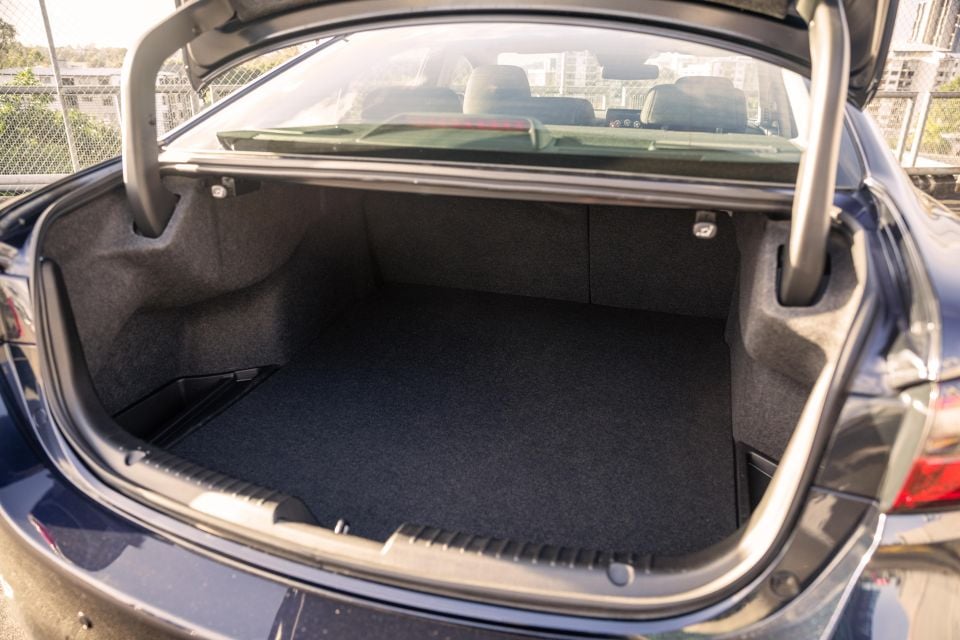
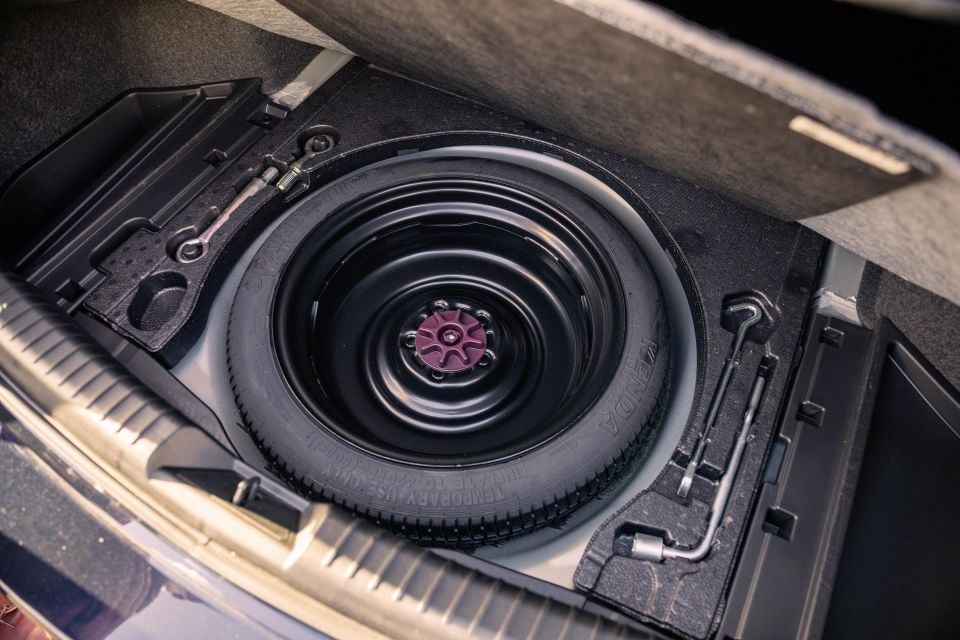
You’ll find two ISOFIX and three top-tether anchor points for child seats. With the relatively low roofline, you’ll have a little more difficulty securing your tots compared to a CX-5, though it’s no worse than a Camry.
The boot is cavernous at 474L, though as it’s a sedan you won’t be able to carry anything too tall. Fortunately, Mazda offers a 6 wagon if you’re determined to avoid getting an SUV like everybody else.
The Mazda 6 is rather low and you certainly step down into it. That gives it a sportier feel but it doesn’t aid accessibility for those who are older, less flexible or who have to handle small children.
If you’re still limber and unimpeded by child seat-aged offspring, you can enjoy saving thousands of dollars compared to a CX-5.
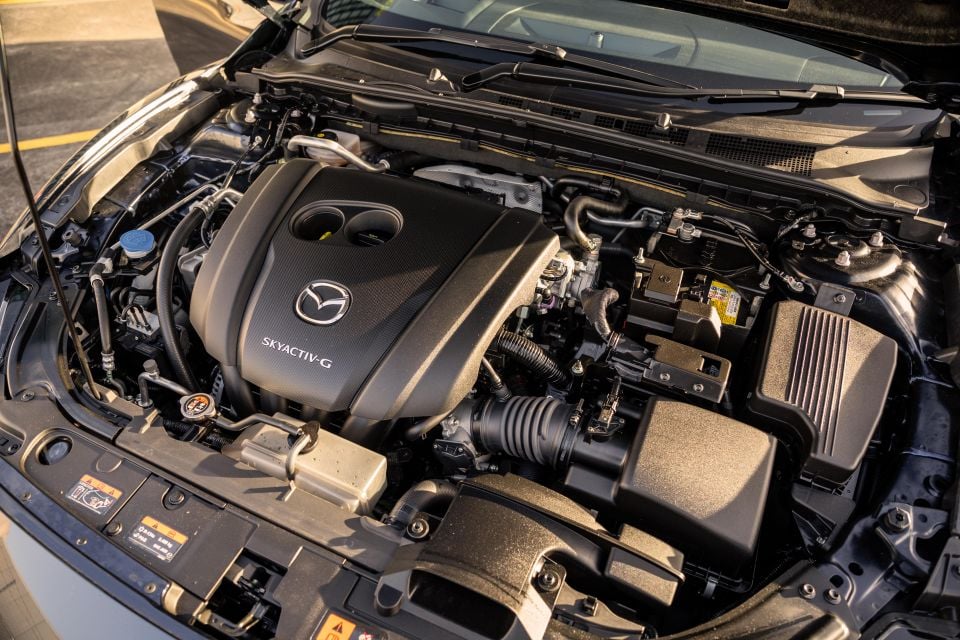
The Sport is powered by a naturally-aspirated 2.5-litre four-cylinder petrol engine.
It develops 140kW of power at 6000rpm and 252Nm at 4000rpm, driving the front wheels via a six-speed torque-converter automatic transmission.
That compares favourably with the Camry which produces 152kW/243Nm in naturally-aspirated four-cylinder guise or 160kW with the hybrid.
The Octavia has less power (110kW) but an almost identical torque figure (250Nm), the latter of which is available lower in the rev range – from 1500rpm to 4000rpm, as opposed to the Mazda where peak torque is available at 4000rpm.
Mazda also offers the 6 with a 170kW/420Nm turbocharged 2.5-litre, but it’s exclusive to the GT SP and Atenza trims.
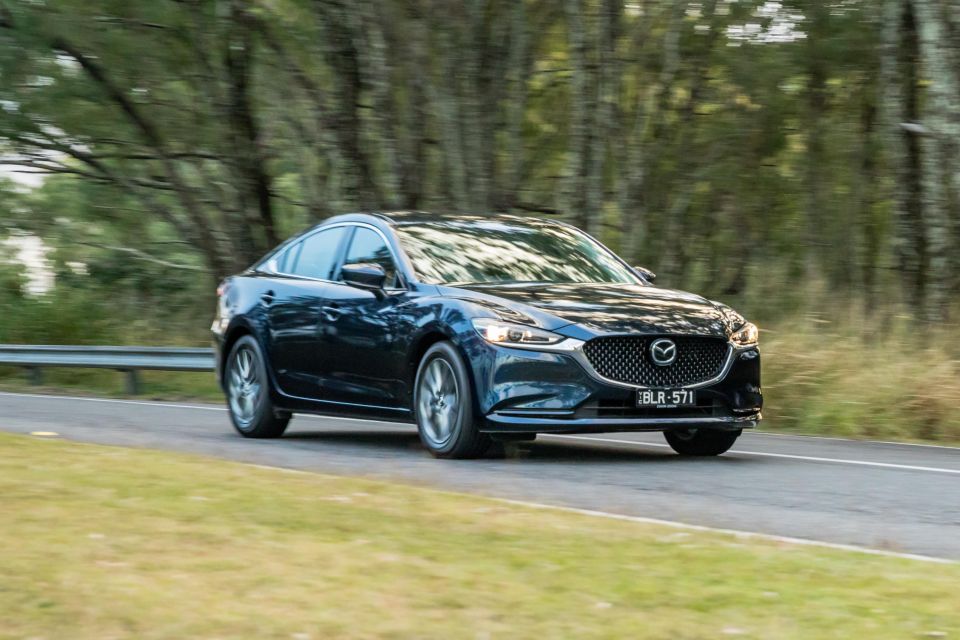
Where expert car reviews meet expert car buying – CarExpert gives you trusted advice, personalised service and real savings on your next new car.
The Mazda 6 offers a nicely-balanced dynamic package with just a hint of sportiness.
The atmo engine isn’t the quickest off the line but it has good mid-range grunt. It’s also got a bit of a pleasant growl to it, and certainly sounds better than a four-cylinder engine from the likes of Hyundai or Kia. Those seeking more power can step up to the GT SP, which has a real honey of a turbocharged engine.
While Mazdas have in the past been criticised for their levels of noise, vibration and harshness, the Mazda 6’s cabin is pleasantly hushed, even at highway speeds where little in the way of wind noise enters the cabin.
The steering is a bit heavy at low speeds, which some may like, and offers a good level of road feel all-round.
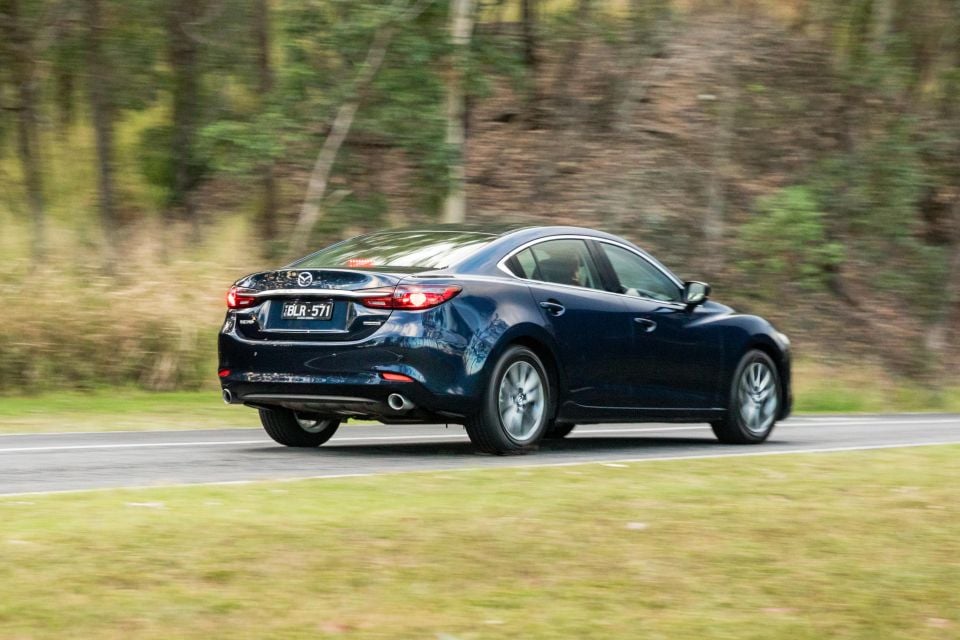
Front wheelspin and torque steer is essentially non-existent, allowing you to take off cleanly. On a winding road, the Mazda 6 also feels poised. Body roll is well-controlled and the steering is direct and well-weighted, though a little more power wouldn’t go amiss.
The transmission is quick to take back control when you’re manually shifting with the paddles. Left to its own devices, the six-speed works well.
It might be down a few cogs on newer transmissions but it’s a smooth ‘box, though it’ll sometimes hold gears a touch long on mountain roads.
Low-speed ride quality could be better. Even on roads that are relatively well-surfaced, the Sport’s ride can feel a bit fidgety up to about 60km/h, though imperfections don’t crash through the structure. Head for the open road and the ride smooths out, and ride quality over poorly surfaced roads at higher speeds is quite good.
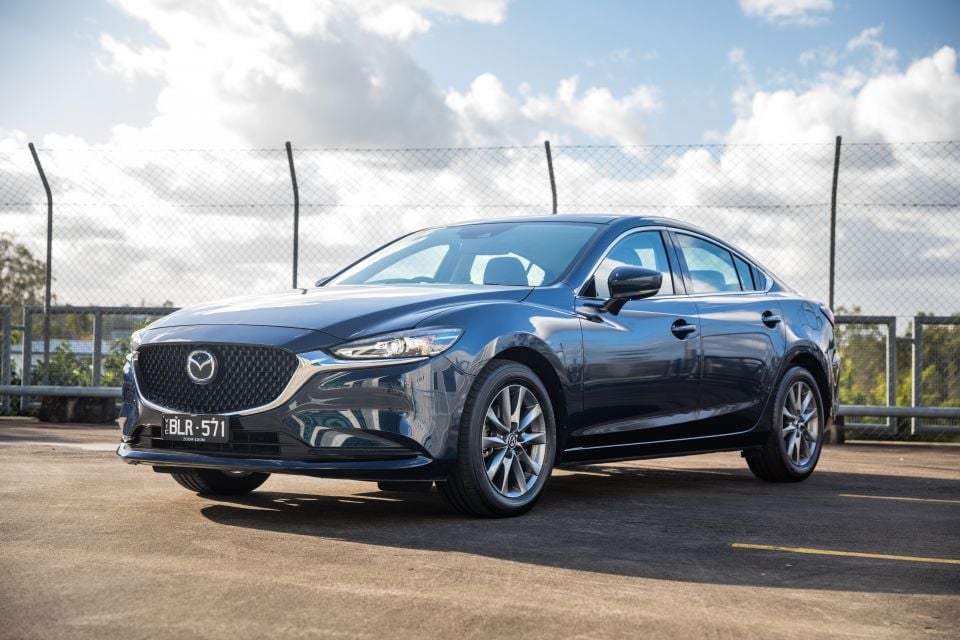
The driver assist features generally work quite well. There’s a good level of adjustability with each system. For example, you can choose between levels of sensitivity and vibration strength for the lane-keep assist and levels of distance for the AEB.
There’s a tangible difference in intervention between Late and Early modes for the lane-keep assist, with Late rendering the system fairly useless albeit utterly unintrusive. You can easily turn the whole system off with the press of a hard button next to the steering wheel, too. While lane-keep assist works a lot better with Early mode toggled, there’s no lane-centring function as you’ll find in, for example, Hyundai and Kia products.
The automatic stop/start, like the lane-keep assist, can also be turned off via a hard button. But, when activated, the system doesn’t intervene quite as frequently as in, say, a Volkswagen Group product.
We appreciate the presence of an Auto Hold function in the Mazda 6, while a head-up display is an underrated safety feature in that it helps keep your eyes on the road. Mazda’s is clear and legible.
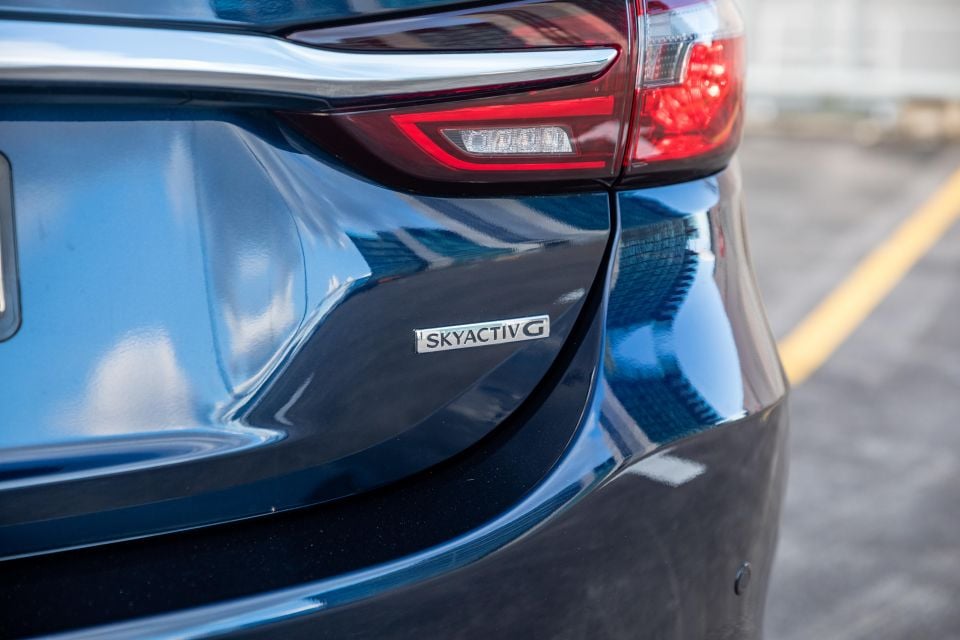
Over our loop comprising inner-city, highway, and suburban roads, we averaged 7.7L/100km. Over the course of a few days, which included a trip from Brisbane to the Gold Coast and hinterlands, that came down to 7.4L/100km.
The official ADR combined cycle rating is 7.0L/100km, and the Sport requires only 91 RON regular unleaded fuel.
Mazda’s line-up is covered by a five-year, unlimited-kilometre warranty which includes five years of roadside assistance.
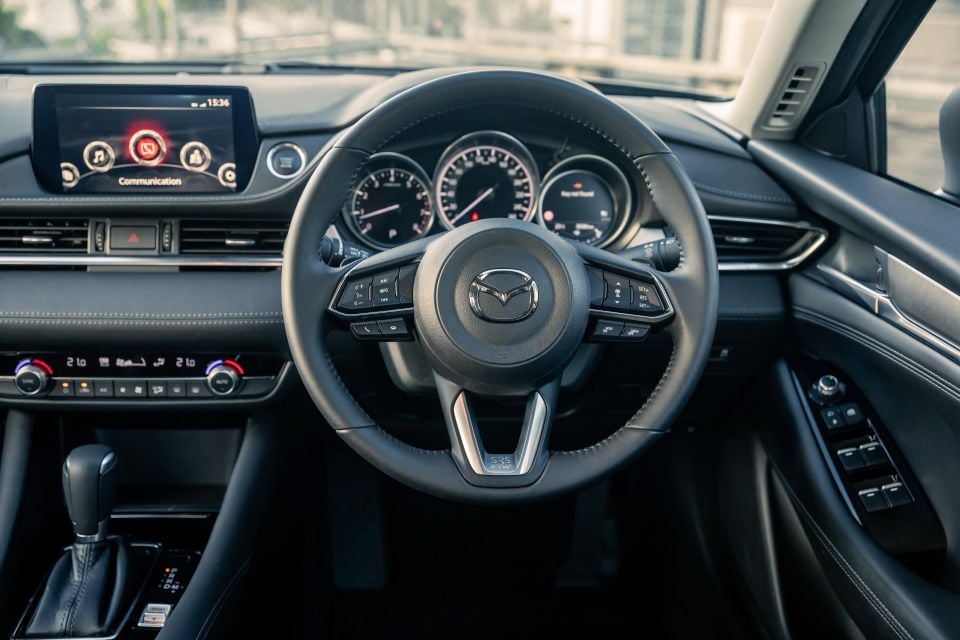
Servicing is required every 12 months or 10,000 kilometres, whichever comes first.
The first five services cost $335, $366, $335, $336 and $335. That’s pricier than the Camry, which has both longer intervals (12 months/15,000km) and cheaper prices ($200 for the first five).
Likewise, the Octavia’s services are cheaper if you opt for the $1400 five-year service plan – that averages $280 a service, again required every 12 months or 15,000km.

In the current generation of Mazda 6’s first year on the market, Mazda sold 7701 of them. That was a simpler time, though, when you could cross-shop one with the likes of a Holden Malibu, Nissan Altima, Renault Latitude or Suzuki Kizashi, among others.
Last year, the tally was down to just 1727 examples. Toyota sells thousands more of the admittedly quite good Camry, but that’s a vehicle with a heavy fleet audience baked in.
Would you be foolish to buy a Mazda 6 today? Not at all. Mazda has kept it fresh with regular updates, and it was always one of the better-looking mid-sizers inside and out, not to mention one of the better steers in this segment.
There may be fewer direct rivals nowadays in Australia, but those cars that have stuck it out in the segment remain tough competitors.
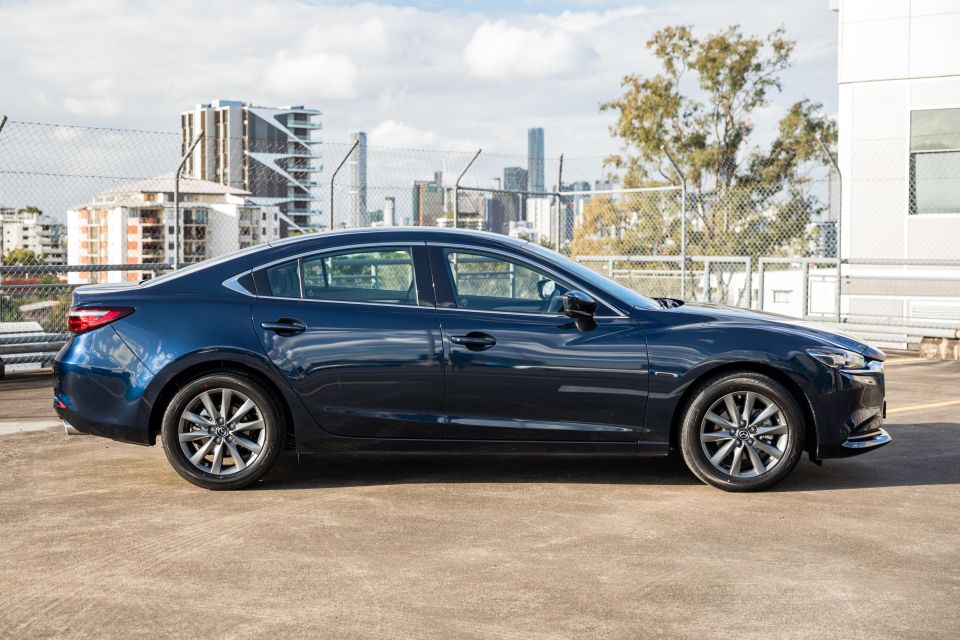
The Skoda Octavia feels more modern, while the Toyota Camry no longer feels like fleet fodder and offers an economical hybrid option. Those two are the Mazda’s key rivals, with everything else costing much, much more.
A CX-5 might have the illusion of extra interior space but it’s not really tangibly roomier, except perhaps in headroom. I love sedans but you have to admit they’re not the most practical body style, so fortunately there’s a Mazda 6 wagon at the ready if you need a more upright load space.
In fact, unless you’re desperate for a diesel, all-wheel drive or a higher step-in, the Mazda 6 is the more sensible option. If only Mazda could borrow the new 10.25-inch Mazda Connect infotainment system from the CX-5…
The Mazda 6 might be one of the older models on the market, but it feels fresh in a way other veterans like the Mitsubishi ASX and Nissan X-Trail don’t. Its ride could be smoother and its in-car tech fresher, but with its long list of safety equipment and high-quality interior, it’s still worthy of consideration.
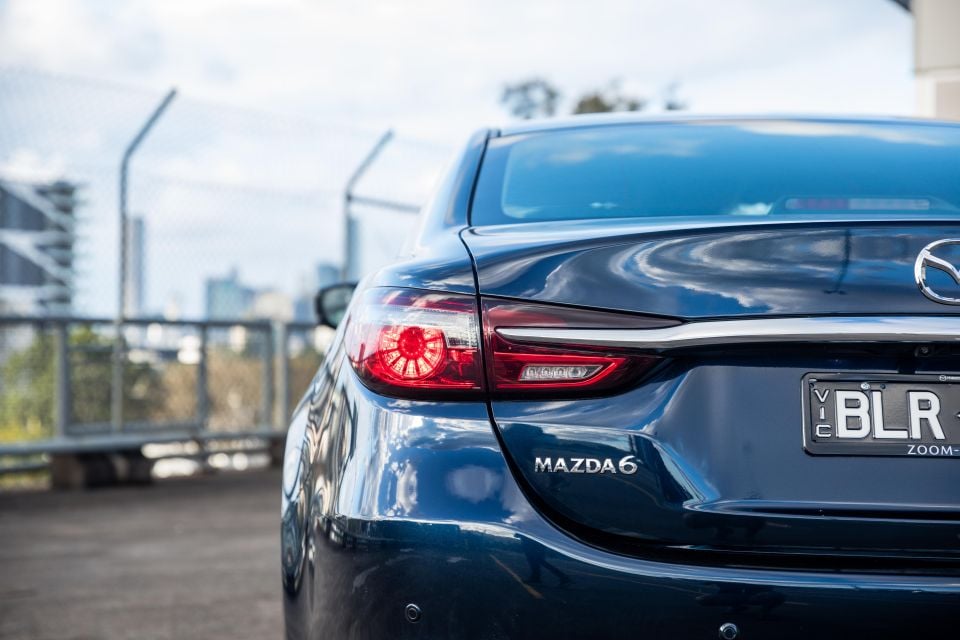
Click the images for the full gallery
MORE: Everything Mazda 6
Where expert car reviews meet expert car buying – CarExpert gives you trusted advice, personalised service and real savings on your next new car.
William Stopford is an automotive journalist with a passion for mainstream cars, automotive history and overseas auto markets.


Damion Smy
1 Day Ago
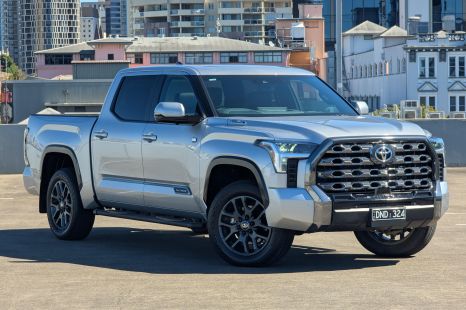

Damion Smy
4 Days Ago
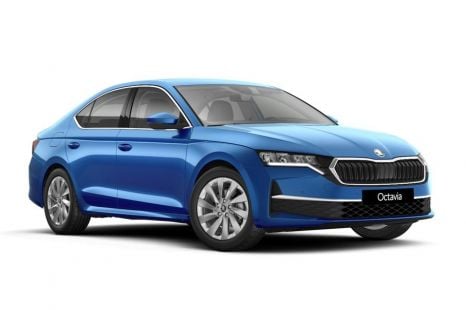

Max Davies
6 Days Ago
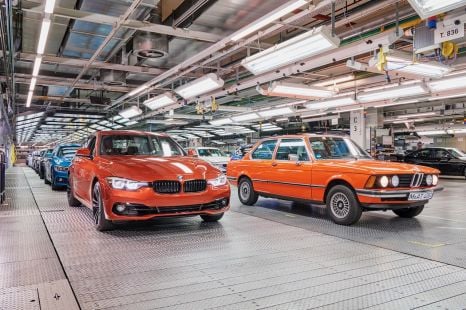

Ben Zachariah
8 Days Ago
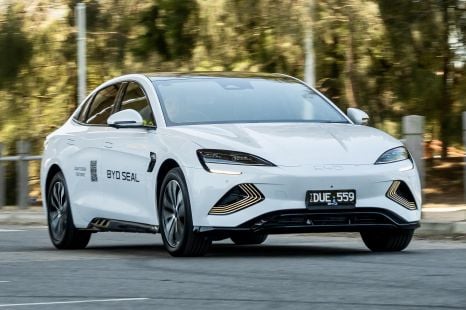

Max Davies
9 Days Ago
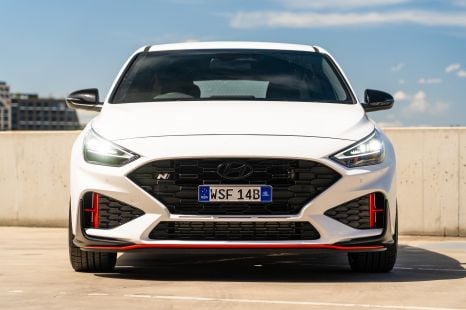

William Stopford
15 Days Ago